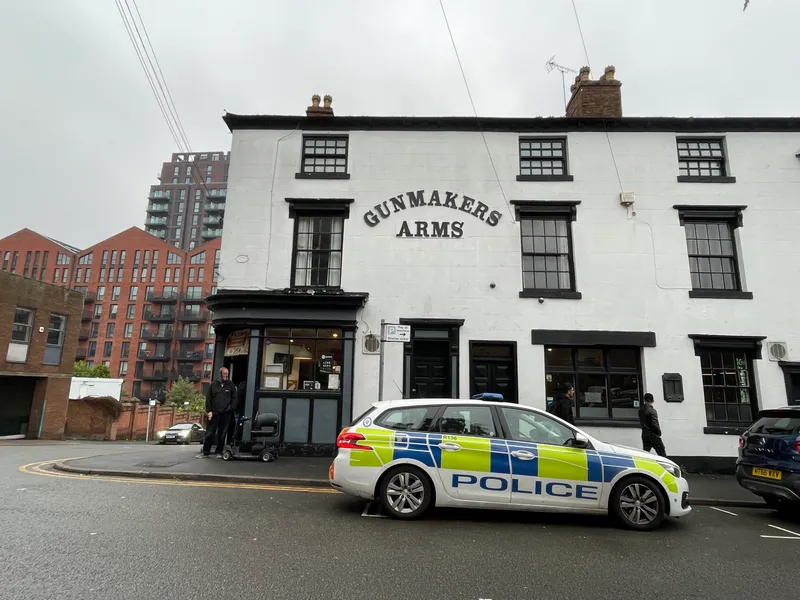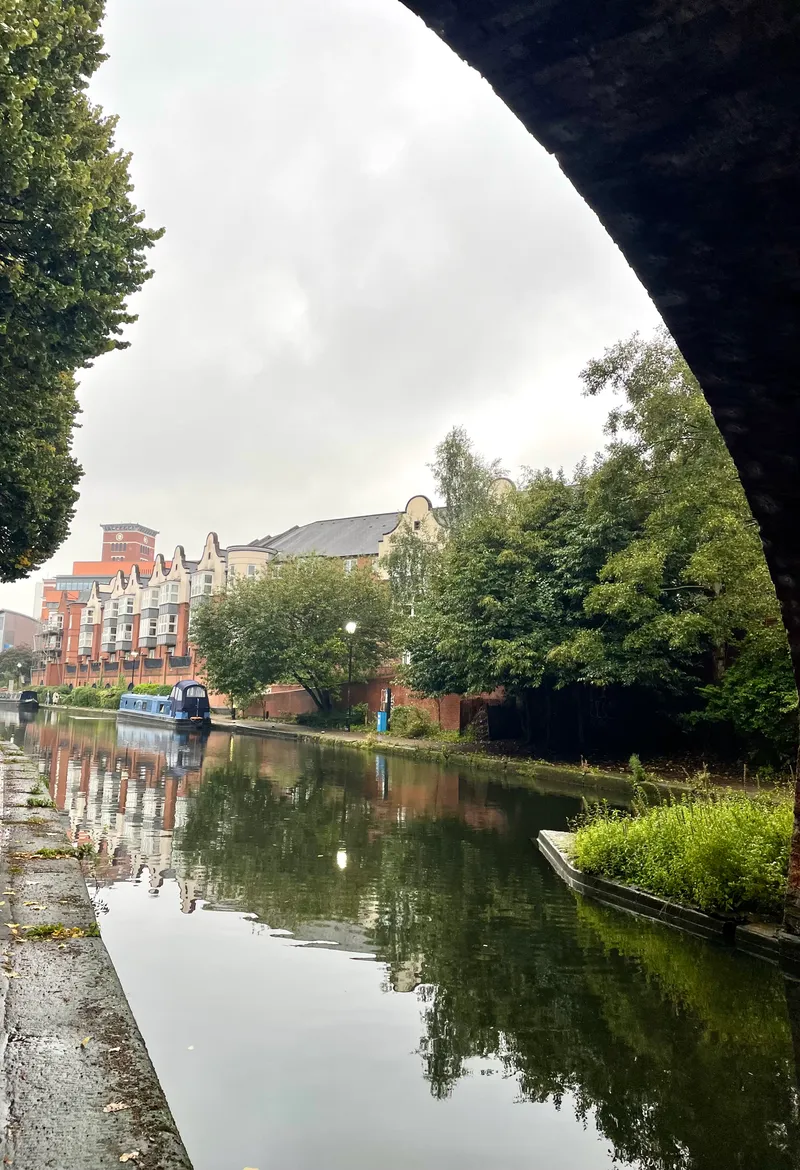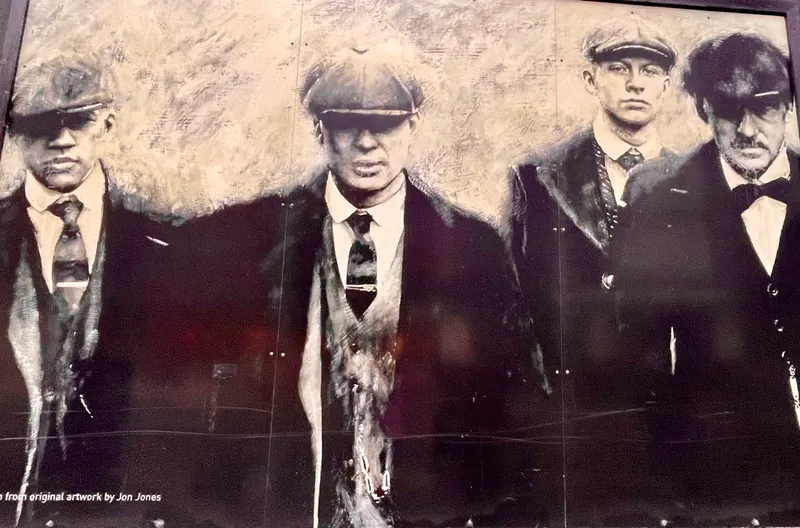Walking in the footsteps of Peaky Blinders in Birmingham
A Peaky Blinders tour in Birmingham and the nearby Black Country Museum, showcases the rise of the Shelby family, the gang at the heart of the popular TV series.
On an overcast day, gloomy grey shadows dawdle on the tarred streets of Birmingham. PJ Harvey’s Red Right Hand plays in the background. The stage is set for the spiffily-dressed Shelby Family in buttoned waistcoats, tailored jackets, lapelled overcoats, bell-bottom trousers, leather boots, and peaked flat caps, to walk in slow motion—on TV, of course!
Steven Knight’s Peaky Blinders has single-handedly put Birmingham on the set-jetting map. It thrust Cillian Murphy into the limelight as Thomas Shelby, who with his family, runs the Peaky Blinders, the most powerful local gang in the lawless streets of Birmingham after World War I.
“The street gang comprised young men from lower and working-class backgrounds and operated from the 1880s until the 1920s. The gangsters had a hand in robbery, violence, racketeering, illegal bookmaking, and control of gambling,” says Edward Shelby, the in-character guide from Top Tours Global taking us on a Peaky Blinders tour in Birmingham.
'Shelby' doffs his cap, much like the ones the gang members wore, but reveals the difference: no razor blades have been sewn into the peak “to be used as weapons”.

Operating since 1820, the Gunmakers Arms was the original Peaky Blinders' garrison
I learn that the population of Birmingham rose from about 70,000 to more than seven lakh people in the 19th century. Working and living conditions in the city were squalid.
Author and journalist J Cummings Walters described these in the Birmingham Daily Gazette: “Here you can veritably taste the pestilential air, stagnant and mephitic, which finds no outlet in the prison-like houses… [yet] here, where there is breathing space for so few, the many are herded together, and overcrowding is the rule, not the exception. The poor have nowhere else to go.”
Not surprising then that there was unrest and turmoil, with youth becoming cynical and choosing violence. Young men formed gangs to gain a semblance of security and soon formed strong bonds with other members.
The Blinders became dominant by beating rivals such as the “Sloggers” whom they fought for territory in Birmingham and its surrounding districts. No wonder then that Murphy’s Tommy Shelby famously remarked in his best Brummie accent: “I don't pay for suits. My suits are on the house or the house burns down.”

Edward Shelby, an in-character guide, details the history of the Peaky Blinders during a walking tour
Edward Shelby, acting the part of a Peaky Blinder, details the culture of crime and gangs that ruled Birmingham in the last century. We walk through the bustling streets, listening as he brings gang history alive in many areas—the West Midlands Police Museum, where the gangs were held before trial; Birmingham Chinatown, where he discusses the proliferation of international gangs; and High Street, where he focuses on the city’s impact on the tea trade.
At Gunmakers Quarter, which once served as a centre of the world's gun-manufacturing industry and specialised in the production of military firearms and sporting guns, we stop at The Gunmakers Arms, once a pit stop for the real Peaky Blinders.
Over a pint, we get a lesson on weapons in Birmingham and their impact on the slave trade. Many women were also associated with the slogging gangs, and were much more than molls and mistresses. Many of them fought to make the streets safer by changing the poor living conditions.
“The Blinders were in control for nearly 20 years. In 1910, the Birmingham Boys, a larger gang led by Billy Kimber, overtook them,” Shelby says. The Blinders all but disappeared by the 1930s, but the name has stayed on as a moniker for any street gang in Birmingham.
At night, over dinner at the Old Crown, one of Birmingham's oldest pubs in Digbeth, I get a look at the exclusive Peaky Blinders area set aside for “Peaky Tours”, which offers insight into the gangs that terrorised the racecourses of England. It’s possible that the Grade II listed building, reportedly dating back to 1368, was frequented by gang members.

An open-air museum of rebuilt historic buildings, the Black Country Living Museum tells the story of the creation of the world’s first industrial landscape.
Steven Knight, the creator of the show and a Birmingham boy through and through, says, “Brummies are now recognised by Peaky Blinders”. “People empathise with these people doing demonstrably bad things. Tommy plays out as a good man doing bad things for a reason,” he tells me in a Zoom interview.
The next day, I return to Digbeth, now Birmingham’s creative quarter. In February 2022, Knight announced the development of Digbeth Loc Studios, a new multi-million-pound TV and film studio.

The canals of Birmingham feature prominently in the Peaky Blinders series
The studio is part of the director and screenwriter’s plan to give back to the city he calls home. Designed to put Birmingham on the media map, the studio will create over 700 jobs and add 30 million pounds to the local economy. Apart from being home to drama This Town, the long-running Masterchef, and local band UB40, it’s also where he will shoot the Peaky Blinders film (scheduled for a 2025 release).
“It’s my dream project. I believe artists are people who change everything, and I want them to come to Birmingham,” Knight says.
His new film—Knight refuses to divulge any details—will also be shot, as the series was, at the Black Country Living Museum, a 35-minute drive from Birmingham.
The Black Country, a collection of 20 or so towns within the boroughs of Dudley, Sandwell, Walsall, and Wolverhampton, changed the world. Its people built the world’s first successful steam engine; put the first steam train (the Stourbridge Lion) on US soil; fuelled the introduction of the first minimum wage; produced the anchor for the Titanic; built the Crystal Palace; and did much more.
Set over 26 acres, the carefully reconstructed shops, houses, and industrial areas tell the story of one of Britain’s very first industrialised landscapes. The museum takes me back in time, with historic characters revealing what it was like to live and work during this time in history. No wonder Knight chose the museum to be the backdrop to all six seasons of his British period crime drama TV series.
The last stop on the tour, definitely “by order of the Peaky Blinders”, has to be the stunning 50m-wide mural of the stars outside New Street Station.

Brummie artist Jon Jones's 50m-wide mural spotlights the stars of Peaky Blinders
Larger-than-life images of Thomas Shelby, Aunt Polly, and Arthur Shelby have been created along Hill Street by Brummie artist Jon Jones. The images may be black and white, but they showcase more than 50 shades of grey. Apt for a mural that’s spotlighting a gang that operated in grey areas. But Tommy doesn’t think so; he believes he’s “just an extreme example of what a working-class man can achieve".
Edited by Megha Reddy







